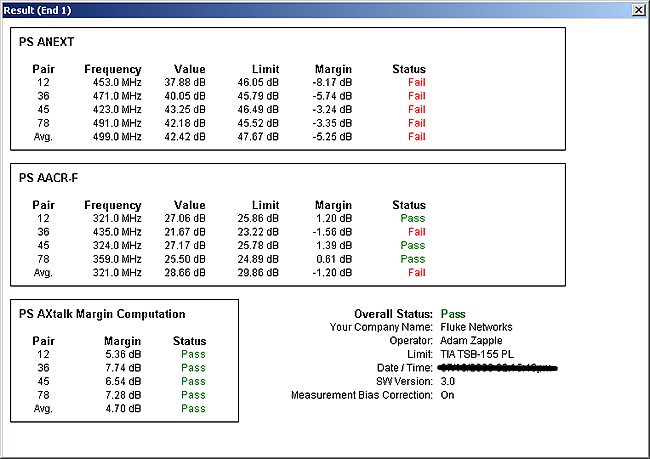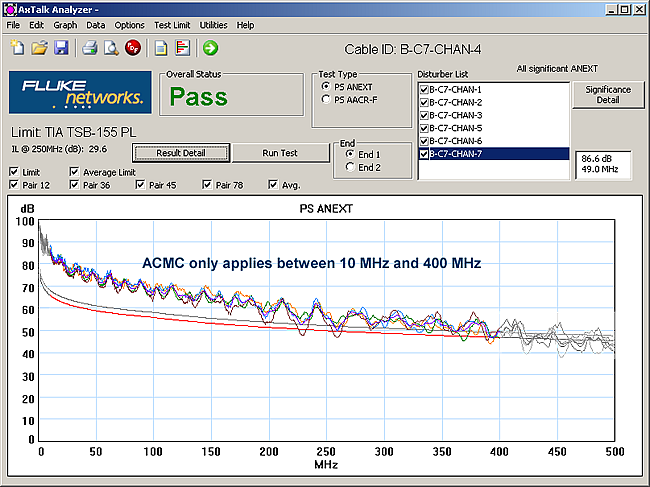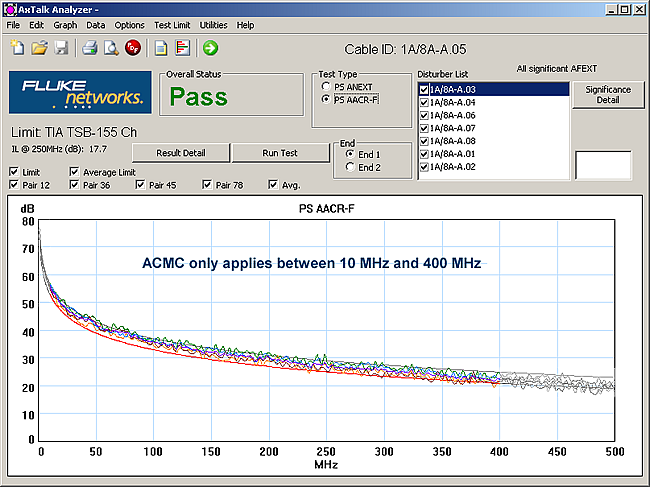PS ANEXT or PS AACR-F fails on TSB-155 but the overall result is a PASS
If you are testing to TIA TSB-155, there is an additional criteria called Alien Crosstalk Margin Computation (ACMC).
Looking at TIA TSB-155 we find:
Annex D Alien Crosstalk Margin Computation
The objective of alien crosstalk margin computation is to further characterize the alien crosstalk coupling between channels. The alien crosstalk margin computation is used in the event that the PS ANEXT limits specified in 6.1.2 table 1 or table 3 or the PS AACR-F limits specified in 6.2.2 equation (9) or equation (11) are not met. The alien crosstalk margin computation ensures the total combined PS AFEXT and PS ANEXT coupled into a channel is limited in order to maintain the 10GBASE-T minimum signal to noise ratio. The alien crosstalk margin is specified for each of the individual 4-pairs as well as the average "across the 4-pairs".
The alien crosstalk margin calculation is a sufficient qualification for suitability of channels to support 10GBASE-T operation.
최종선: We ignore the PS ANEXT and PS AACR-F result and ONLY look at the ACMC.

In this extreme example, both PS ANEXT and PS AACR-F FAIL. But, since this is TIA TSB-155 (10GBASE-T) we don't care. All we care about is the Alien Crosstalk Margin Computation, labeled here as PS AXtalk Margin Computation. As you can see it PASSes. So this link WILL support 10GBASE-T operation. There is no need to rip out this cable and install Category 6A.
Out of curiosity, let's look at the PS ANEXT and PS AACR-F graphs for the above result. TIA TSB-155 (10GBASE-T) is significantly easier to pass than Category 6A for many reasons. Ignoring the alien crosstalk values above 400 MHz is one of them.






